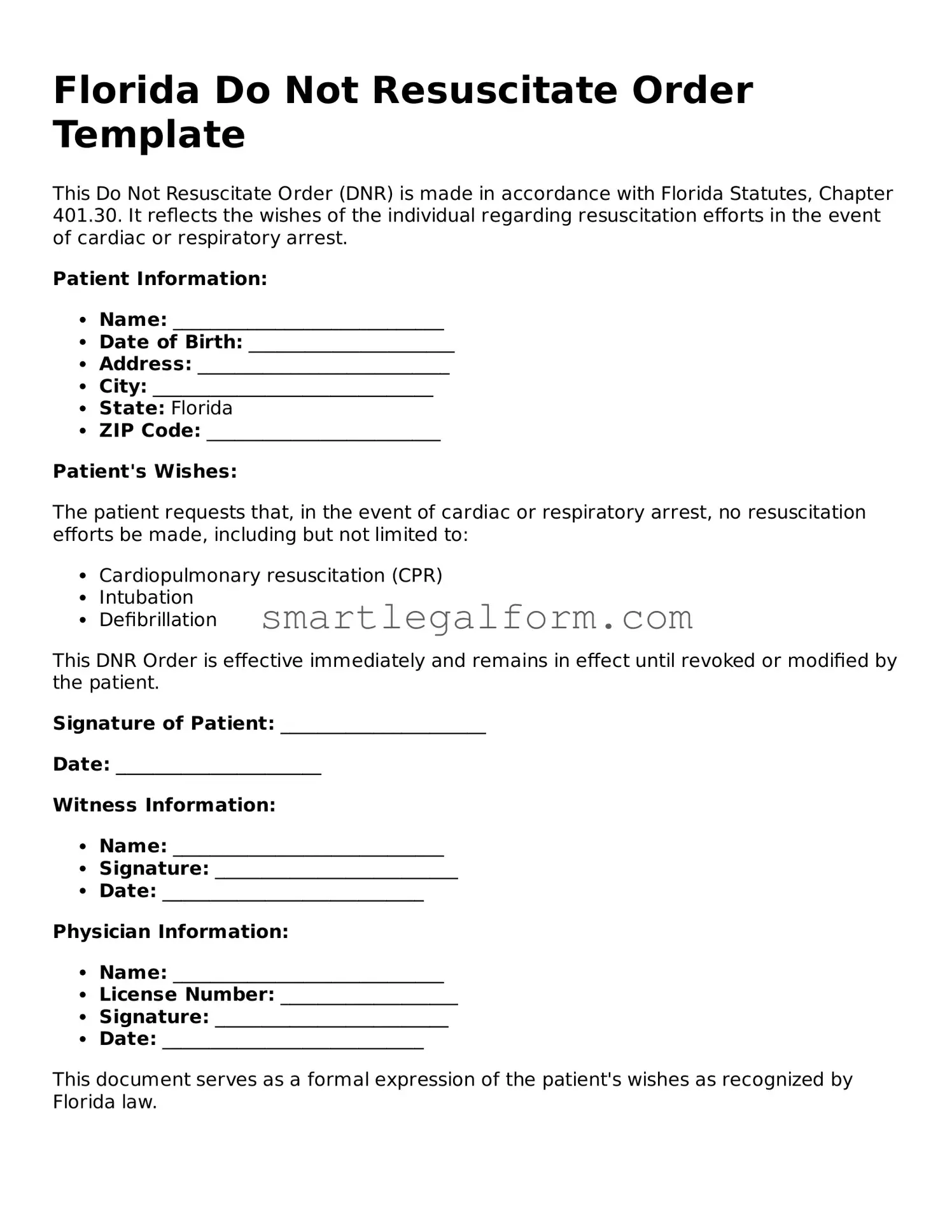Florida Do Not Resuscitate Order Template
This Do Not Resuscitate Order (DNR) is made in accordance with Florida Statutes, Chapter 401.30. It reflects the wishes of the individual regarding resuscitation efforts in the event of cardiac or respiratory arrest.
Patient Information:
- Name: _____________________________
- Date of Birth: ______________________
- Address: ___________________________
- City: ______________________________
- State: Florida
- ZIP Code: _________________________
Patient's Wishes:
The patient requests that, in the event of cardiac or respiratory arrest, no resuscitation efforts be made, including but not limited to:
- Cardiopulmonary resuscitation (CPR)
- Intubation
- Defibrillation
This DNR Order is effective immediately and remains in effect until revoked or modified by the patient.
Signature of Patient: ______________________
Date: ______________________
Witness Information:
- Name: _____________________________
- Signature: __________________________
- Date: ____________________________
Physician Information:
- Name: _____________________________
- License Number: ___________________
- Signature: _________________________
- Date: ____________________________
This document serves as a formal expression of the patient's wishes as recognized by Florida law.
